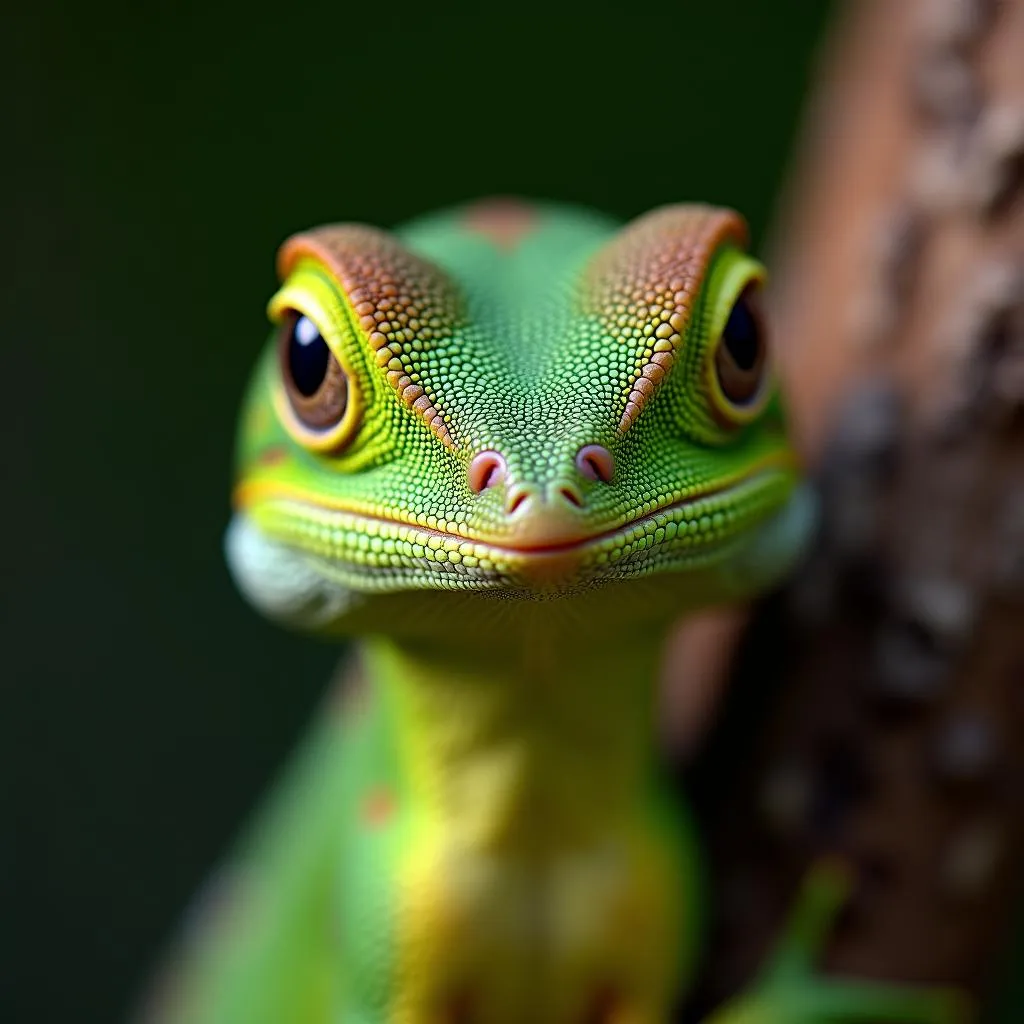Green anoles are fascinating lizards known for their vibrant green coloration. But did you know that these captivating creatures can actually change color? While not as dramatic as a chameleon’s transformation, the ability of green anoles to shift their hue is a remarkable adaptation that helps them thrive in their environment.
The Science Behind Color Change in Green Anoles
Contrary to popular belief, green anoles don’t possess pigment-changing cells like chameleons. Instead, their color change is primarily attributed to the contraction and expansion of specialized pigment cells called chromatophores located within their skin.
Here’s a closer look at the process:
- Melanophores: These chromatophores contain melanin, a dark pigment responsible for brown and black coloration. When melanin is dispersed throughout the melanophores, the anole appears darker. Conversely, when the melanin is concentrated, the anole appears lighter.
- Iridophores: These cells contain guanine crystals that reflect light, creating iridescent hues. By adjusting the spacing between these crystals, green anoles can alter the wavelengths of light reflected, resulting in subtle color shifts.
Factors Influencing Color Change
The color change in green anoles is not merely a matter of camouflage; it’s a complex response to various environmental and physiological factors. Some key triggers include:
- Temperature: Cooler temperatures often lead to darker coloration, allowing the anole to absorb more heat from the surroundings. On the other hand, warmer temperatures prompt a lighter, more reflective green to prevent overheating.
- Mood: Just like humans express emotions through facial expressions, green anoles communicate their mood through color changes. A dominant male displaying aggression might turn a bright green, while a submissive individual might adopt a duller brown shade.
- Light Intensity: The amount of light in the environment also plays a role. In low light conditions, anoles tend to become darker, while bright sunlight may trigger a lighter green coloration.
- Health: A healthy green anole typically exhibits vibrant coloration. Illness or stress can lead to a duller or darker appearance.
 Green Anole Changing Color
Green Anole Changing Color
Debunking Common Misconceptions
While green anoles possess the remarkable ability to change color, there are some common misconceptions surrounding this phenomenon:
- Myth: Green anoles can change color to match any background.
- Fact: While they can adjust their shade, the color range is limited to variations of green, brown, and gray. Their color change primarily serves purposes beyond camouflage, such as thermoregulation and communication.
- Myth: Color change in green anoles is instantaneous.
- Fact: The color shift in green anoles is gradual and can take several minutes to become noticeable. It’s not a rapid transformation like that observed in chameleons.
Observing Color Change in Green Anoles
You can witness this captivating adaptation firsthand by observing green anoles in their natural habitat or even in a terrarium. Pay close attention to their color variations throughout the day and in response to changes in temperature, light, or their social interactions.
Conclusion
The ability of green anoles to change color is a testament to the wonders of nature’s adaptations. Far from being a simple camouflage tactic, it’s a complex interplay of physiological and environmental factors that allows these intriguing creatures to thrive. So, next time you encounter a green anole, take a moment to appreciate the subtle beauty of their color-changing prowess. It’s a reminder that even in the seemingly ordinary, there’s always more to discover in the natural world.
Need assistance with understanding more about green anoles or other fascinating creatures? Contact us at 0373298888, email us at [email protected], or visit our office located at 86 Cầu Giấy, Hà Nội. Our team is available 24/7 to answer your questions.
